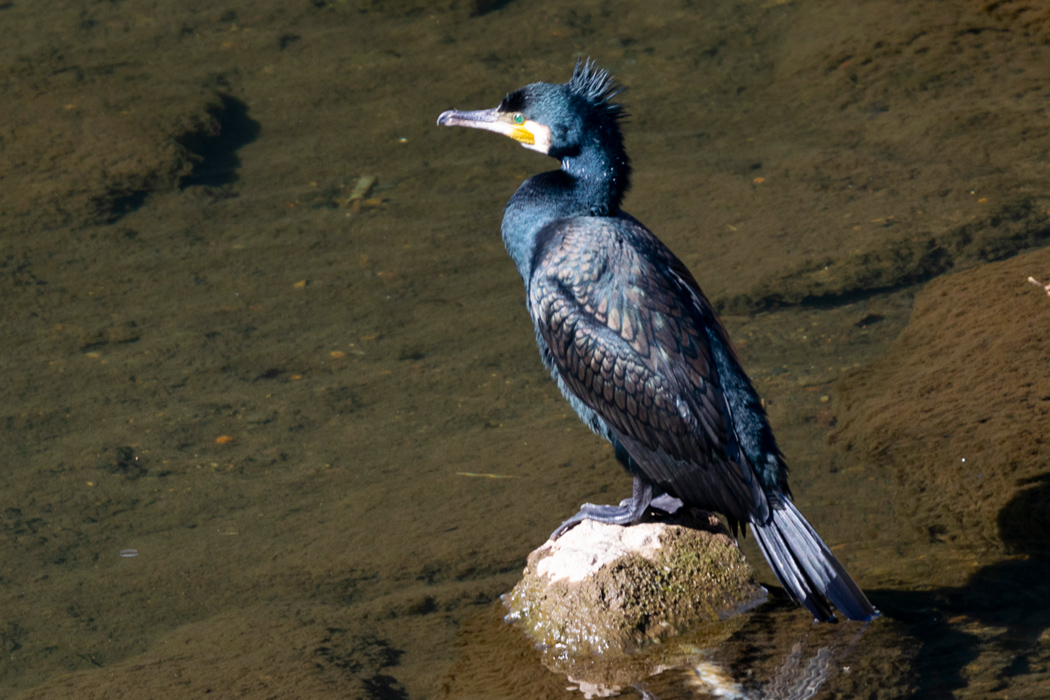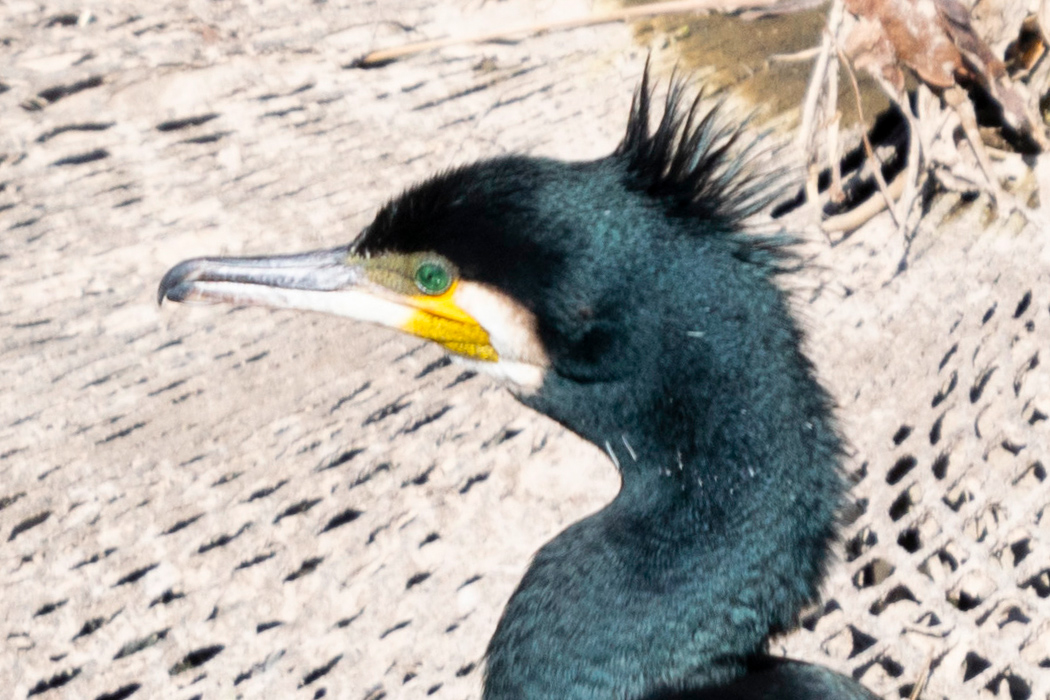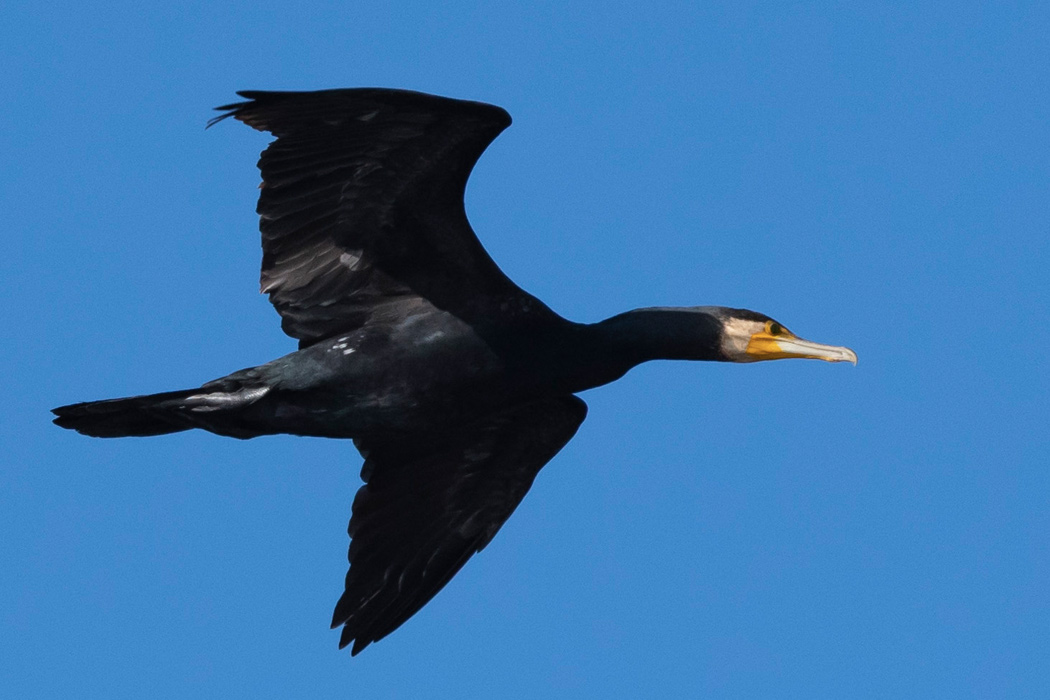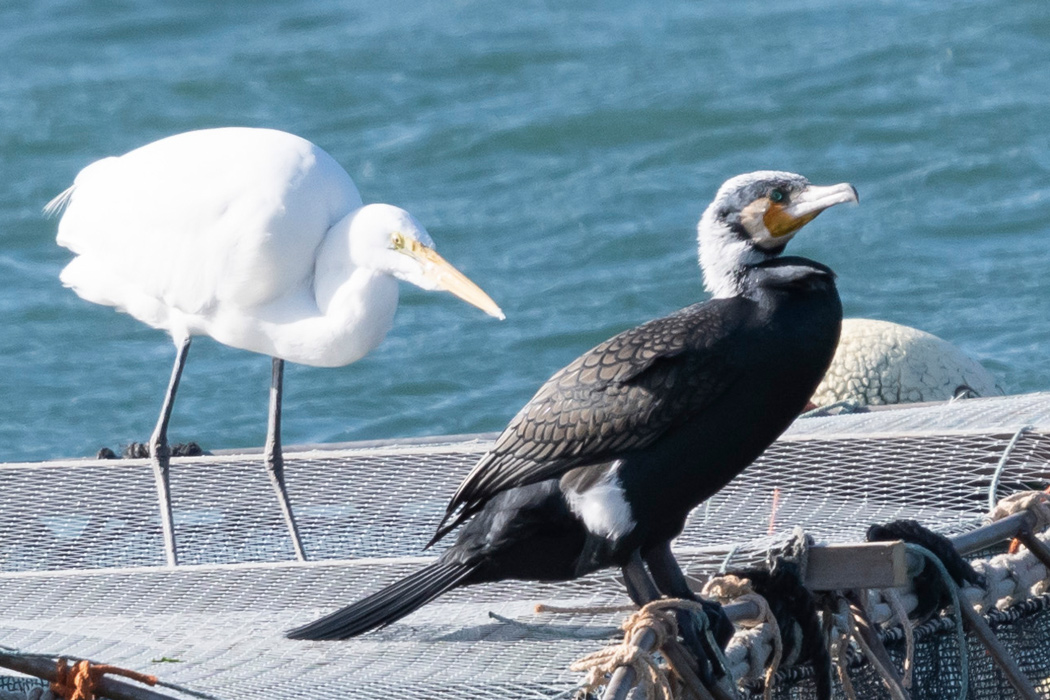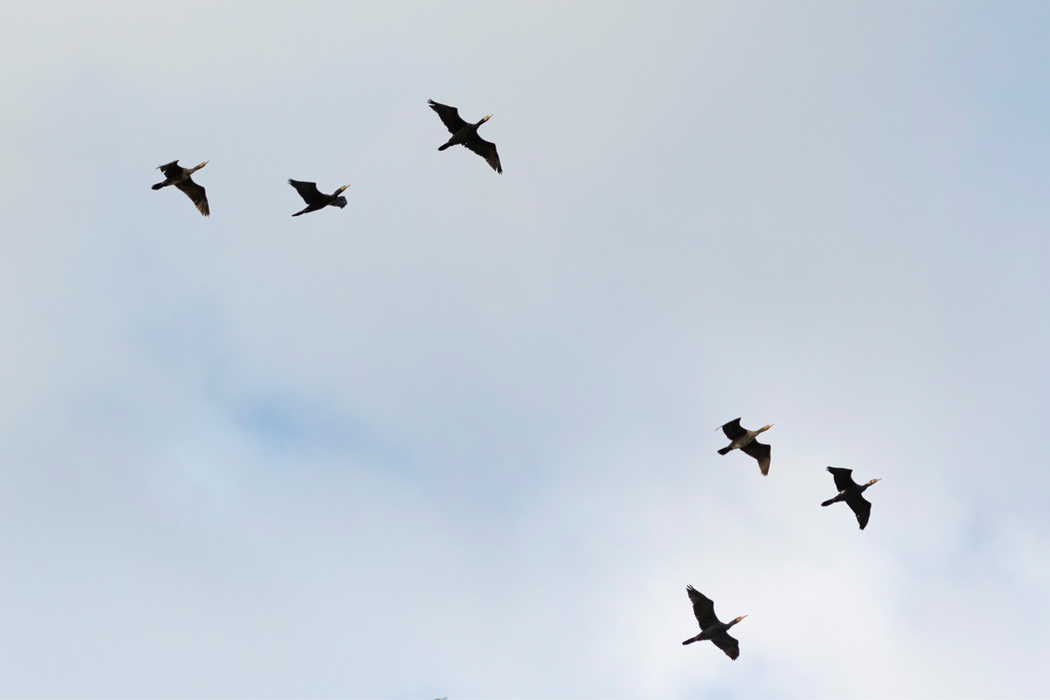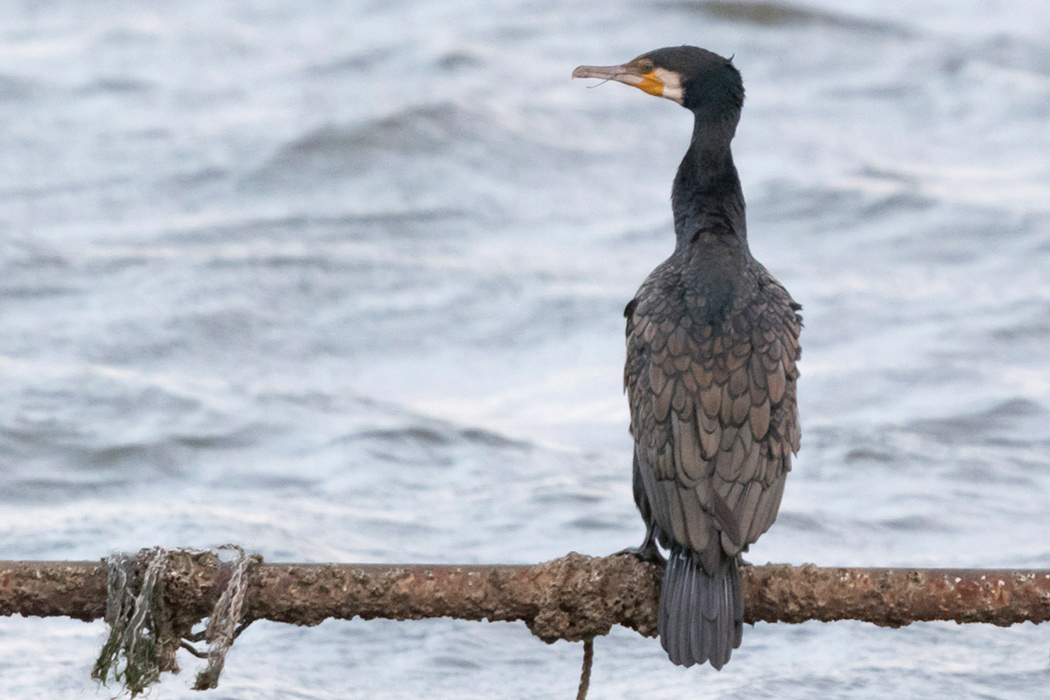
Great Cormorant
Features green iris and yellow mouth corners.
| Scientific name | Phalacrocorax carbo |
| English name | Great Cormorant |
| Japanese name | 河鵜 |
| Classification | Aves |
| Classification details | Suliformes Phalacrocoracidae |
| Full length | 80-101cm |
| Distribution | Inhabits all over the country as a resident or wandering bird |
Characteristics
The whole body is brownish black, and parts other than the wings can look dark green depending on how the light hits it. The iris is a beautiful green color. It has a sharp hooked beak for catching fish. It differs from similar cormorants in that the base of its beak is yellow and the wide-angle part is rounded. It takes off with a run-up on its webbed feet. During the breeding season, the head and waist become white.

Ecology
They live in rivers and lakes and catch and eat fish in the water. On sunny days, it spreads its wings at the water's edge to dry. They move in groups and gather branches on trees to build nests and reproduce. Sometimes forms colonies with herons.
Habitat
I found him resting on the bank of the river in Asakawa, Hachioji City. In addition to juvenile cormorants, there were gray herons and great egrets nearby. I could see them diving to catch fish and drying their wings in sunny places.
Pictures
Introducing a picture of Great Cormorant.
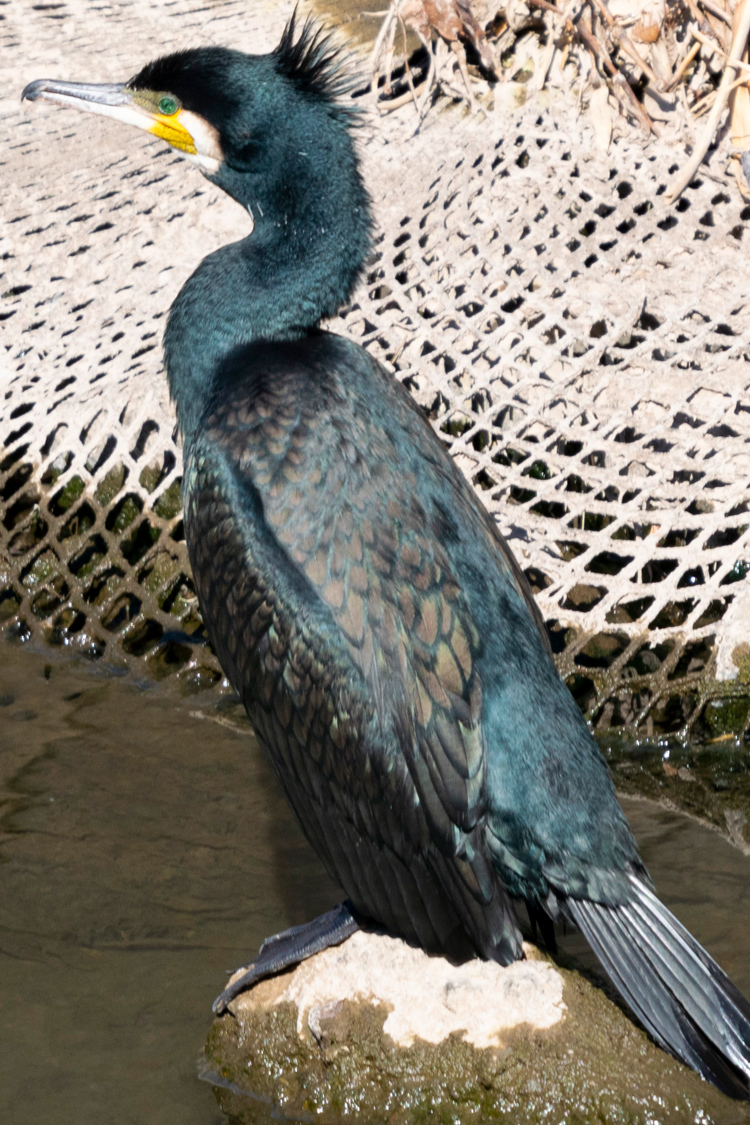
Picture book
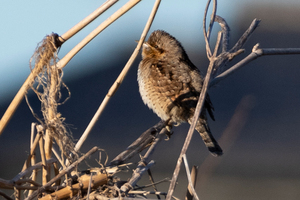
Eurasian wrynecki
Eating ants on rotting wood.......ead more.

---
Interesting name, but poisonous species.......ead more.
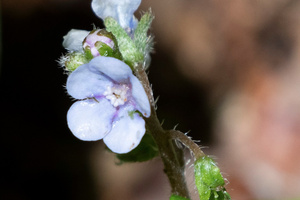
---
small lilac flowers hidden at the edges.......ead more.

---
dark color reminiscent of the crimson cords of weapons......ead more.

Indo-Pacific mantis
Can be seen until late autumn. It is characterized by the white stripes on the forewings.......ead more.
